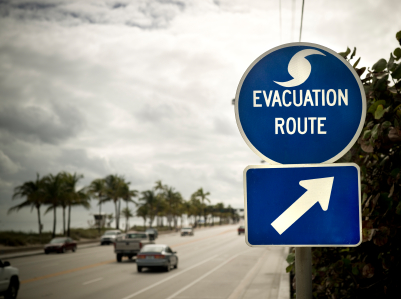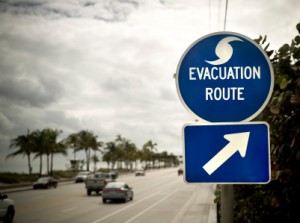In light of recent events, the Federal Emergency Management Agency (FEMA) is encouraging homeowners to take advantage of the New Year to make sure their family is prepared should a disaster affect their home and/or community.
Disasters – caused by human error or by nature – can strike quickly and without any warning, leaving a family or a whole community without basic services needed to survive.
When large scaled disasters occur, local governments and relief workers will be on the scene shortly after the event, but they cannot reach everyone right away. This is why FEMA and other disaster relief organizations – such as the American Red Cross – encourage homeowners to secure their home and even create their own family disaster plan.
To figure out what you need to include in your disaster plan, contact your local American Red Cross chapter.
According to FEMA and the Red Cross, there are four basic steps to developing any family disaster plan:
Determine what could happen to you:
Before creating a disaster plan, ask yourself the following questions.
· What disasters are most likely to occur in your area?
· Is there a public warning system in your community?
· Who are you responsible for? Children? Animals? Elderly or disabled person?
· What about your workplace or children’s school/day care center?
· Where’s the closest emergency relief center?
· What does your home insurance cover?
Create a plan:
When creating a family disaster plan, meet with your entire family to discuss the potential dangers or disasters that could hit your area. It is advisable to share the responsibilities and work together as a team to accomplish everything that needs to get done.
Your plan should consist of two meeting places: one right outside your home in case of a sudden emergency and one outside of your neighborhood in case of community-wide disaster. This should also include an emergency communication plan in case family members are separated from one another when disaster strikes.
Be prepared in case local authorities ask you to evacuate the area. Set up alternative living arrangements at either a friend or relative’s house that lives out of town or locate emergency shelter locations.
Complete the following checklists:
· Post emergency telephone numbers in secure, easy to reach locations
· Install and regularly check smoke detectors
· Annually inspect your home for any potential hazards and fix them
· Stock up on emergency supplies – such as water, canned goods, battery-operated radio, extra batteries, flashlight, first-aid kit, etc.
· Consider getting CPR certified
· Duplicate vital documents and store them in an alternative, secure location – such as a safety deposit box
· Annually take inventory of your home, garage, car and surrounding property (for insurance purposes)
· Locate safe places in your home for each type of disasters
Practice and constantly update your plan:
· Routinely quiz your family members about all aspects of the disaster plan
· Restore emergency supplies, if and when they get low
· Replace batteries in your smoke detector once a year and replace the entire unit every 10 years
· If any changes or additions have been made to your house or you have moved, you should adjust your plan accordingly
Perhaps the most important part of any disaster plan, is acquiring proper home insurance that can help cover any damages lost. It is especially important to update one’s policy, if living standards were to increase. Inadequate home insurance could be catastrophic if something was to happen and wasn’t covered under your current policy.













